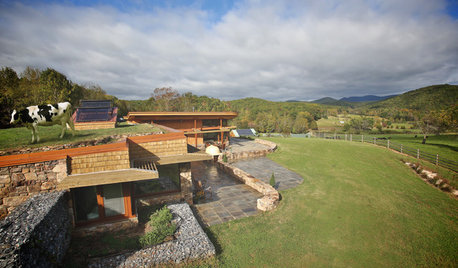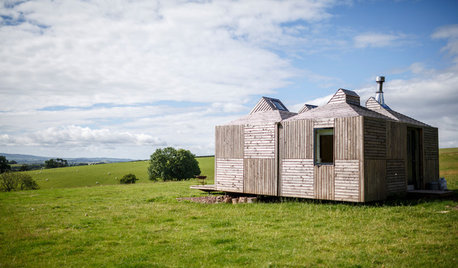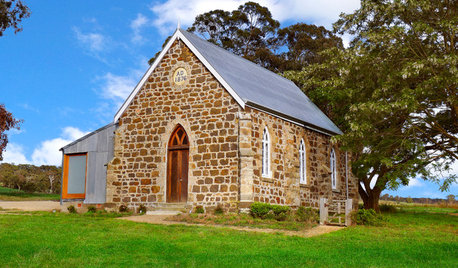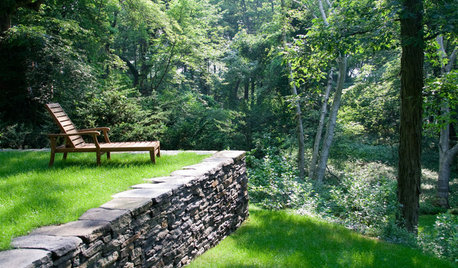*%@# sheep!
pyrgal
17 years ago
Related Stories

HOUZZ TOURSHouzz Tour: A Self-Sufficient Farmhouse With a Sheep-Pasture Roof
LEED Platinum certification and a soil-covered top make this pastoral Virginia home green in more ways than one
Full Story
GREEN BUILDINGInsulation Basics: Natural and Recycled Materials
Consider sheep’s wool, denim, cork, cellulose and more for an ecofriendly insulation choice
Full Story
VACATION HOMESHouzz Tour: Scottish Farm Cottage Looks to Sun and Stars
A sheep field is home to a small, energy-efficient house that pulls ideas from mobile home design and raises the style level
Full Story
HOUZZ TOURSHouzz Tour: From 1800s Church to Country Residence
... with a stint as a sheep-shearing shed. Now the new owner is making his own mark — and having a little fun with the design
Full Story
PRODUCT PICKSGuest Picks: Sleepy-Time Soothers
Give those sheep the night off — count on these indulgent bed linens and accessories for a good night’s sleep instead
Full Story
HOUZZ TOURSMy Houzz: A Cabin of Curiosities in Los Angeles
A sheep's head here, a beaded fringe there and layers of exotic prints and art everywhere work wonderfully in a personal "Shangri-La"
Full Story
COLORNature’s Color Wisdom: Lessons on White From the Great Outdoors
Blizzard fierce or butter soft, white can highlight shapes, unify a room and perform miracles on the cheap
Full Story
LANDSCAPE DESIGNWhat the Heck Is a Ha-Ha, and How Can It Help Your Garden?
Take cues from a historical garden feature to create security and borders without compromising a view
Full Story
DECORATING GUIDESTo Drape a Throw or Fold It?
Spilling softly or crisply creased, throws on chairs, sofas and chaises offer beauty and comfort
Full Story
HOUZZ TV FAVORITESHouzz TV: A New England Farmhouse Explodes With Color
Creativity and color burst from every corner in this unique 18th-century Massachusetts home for an artist and her family
Full Story





rhodyman
pyrgalOriginal Author
Related Professionals
Canton Landscape Architects & Landscape Designers · New Bedford Landscape Architects & Landscape Designers · Wrentham Landscape Architects & Landscape Designers · Hershey Landscape Architects & Landscape Designers · Kyle Landscape Architects & Landscape Designers · Brooklyn Center Landscape Architects & Landscape Designers · Burlington Landscape Contractors · Gainesville Landscape Contractors · Bowie Landscape Contractors · Lakewood Landscape Contractors · Lyndhurst Landscape Contractors · Monterey Landscape Contractors · Round Lake Landscape Contractors · Sammamish Landscape Contractors · Reisterstown Landscape Contractorsmorz8 - Washington Coast